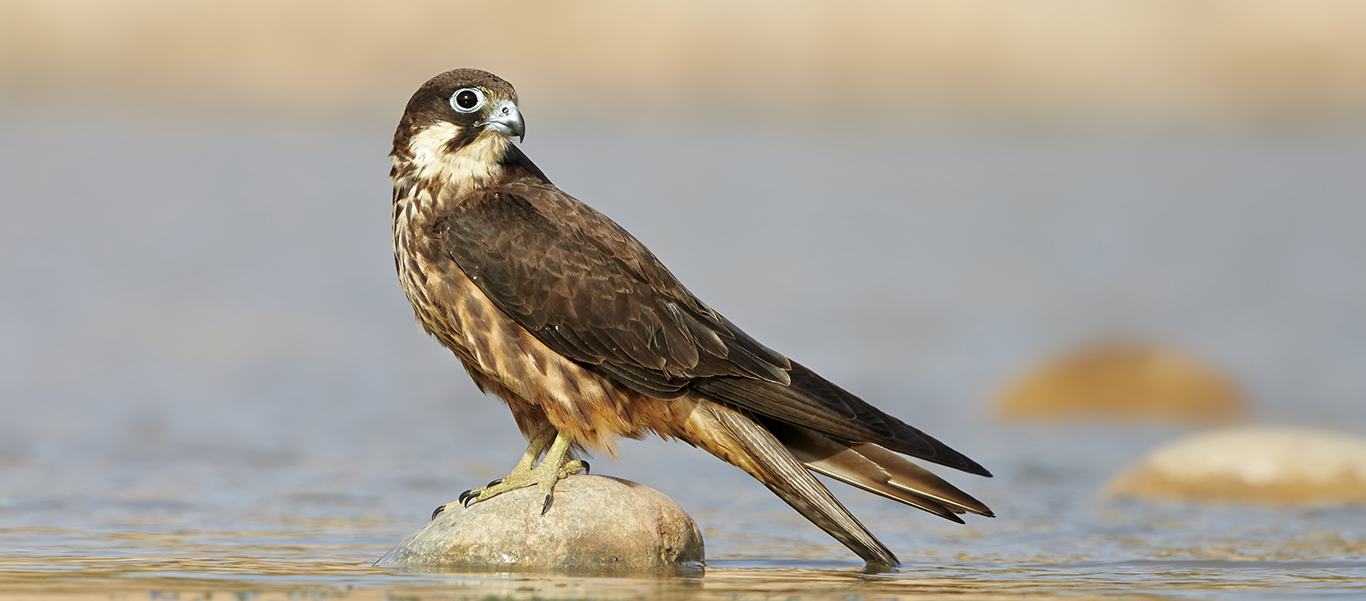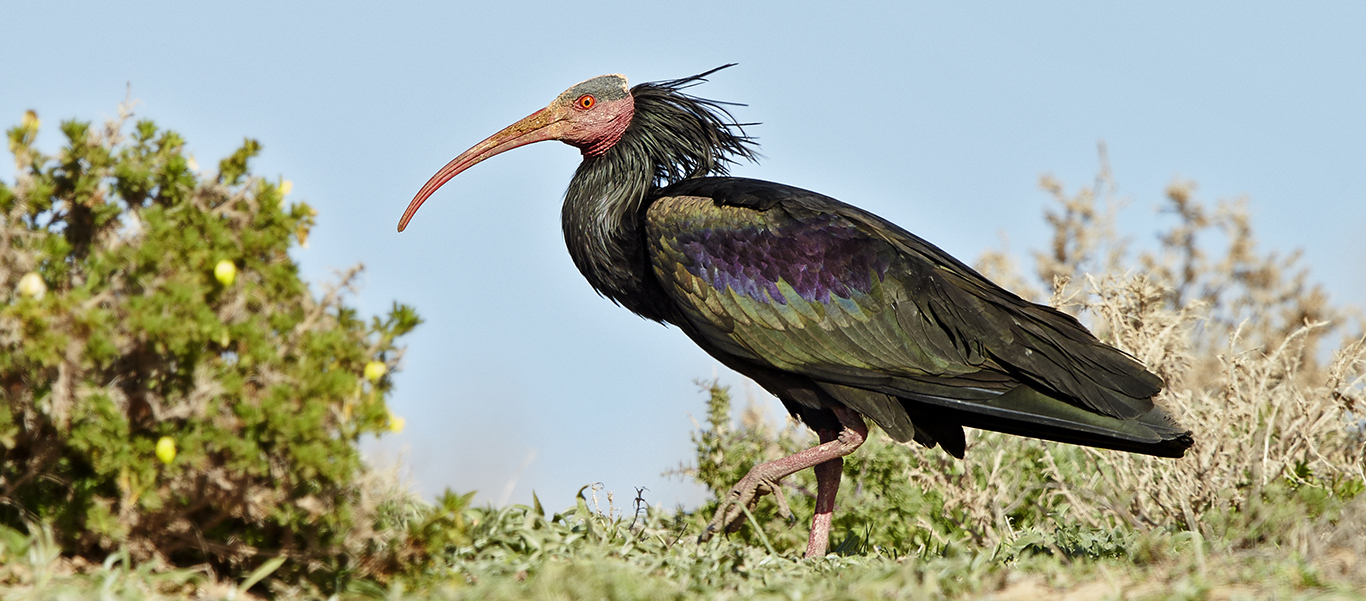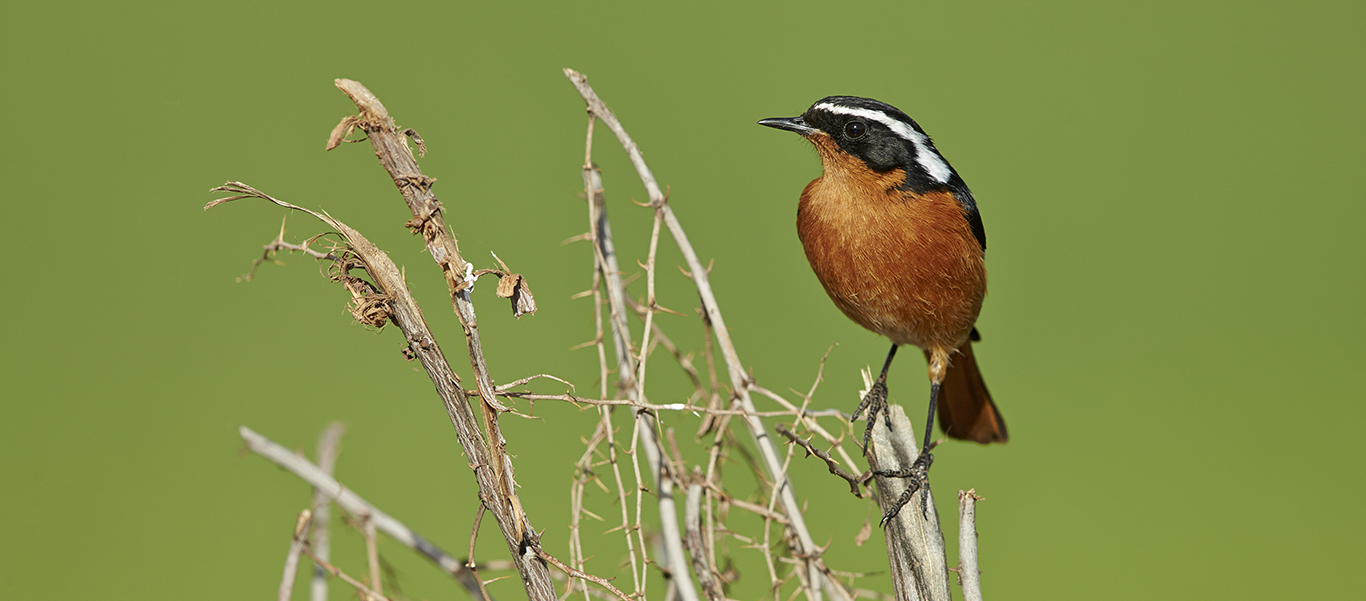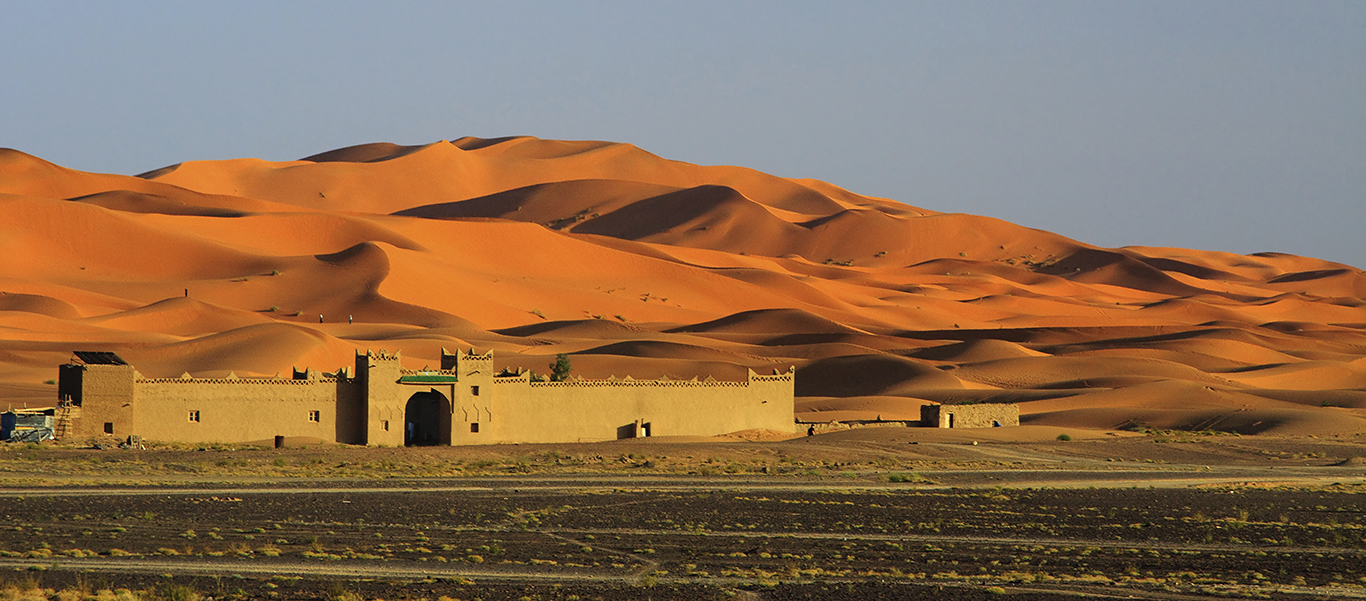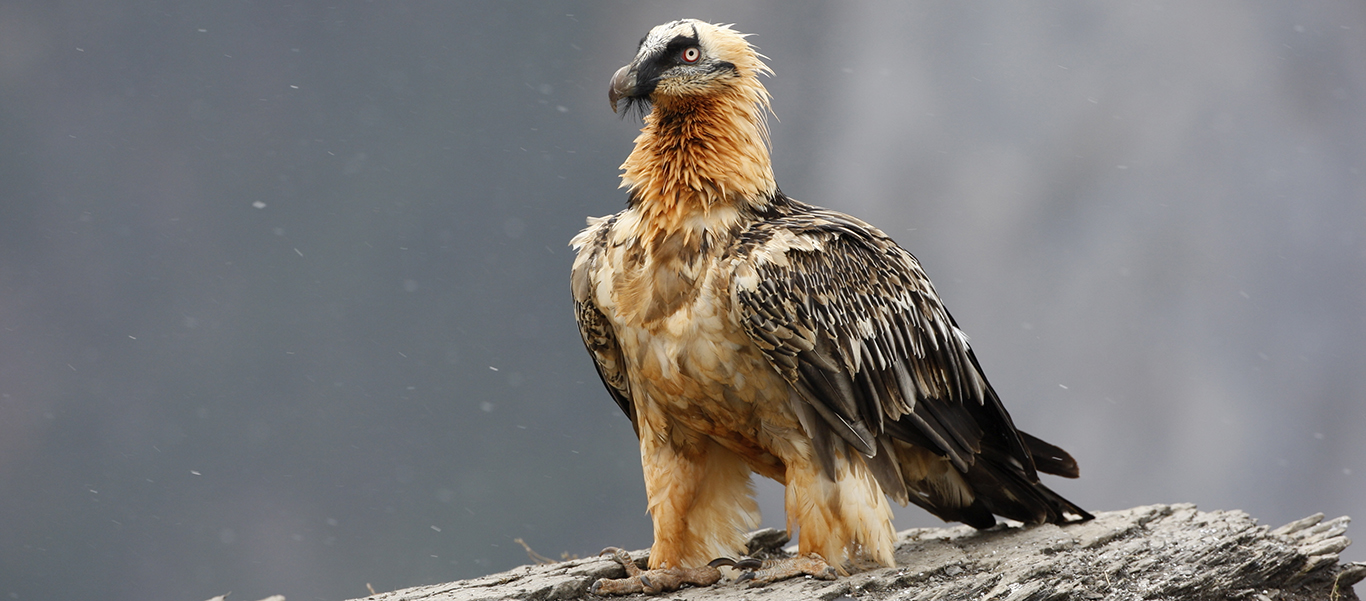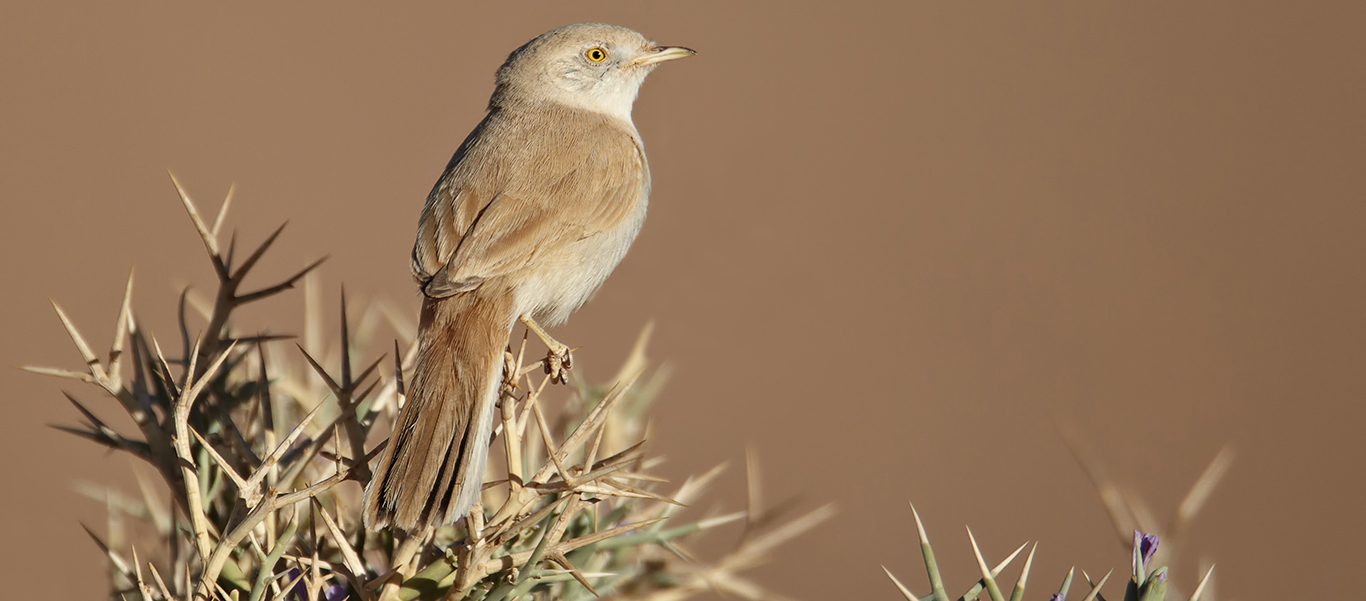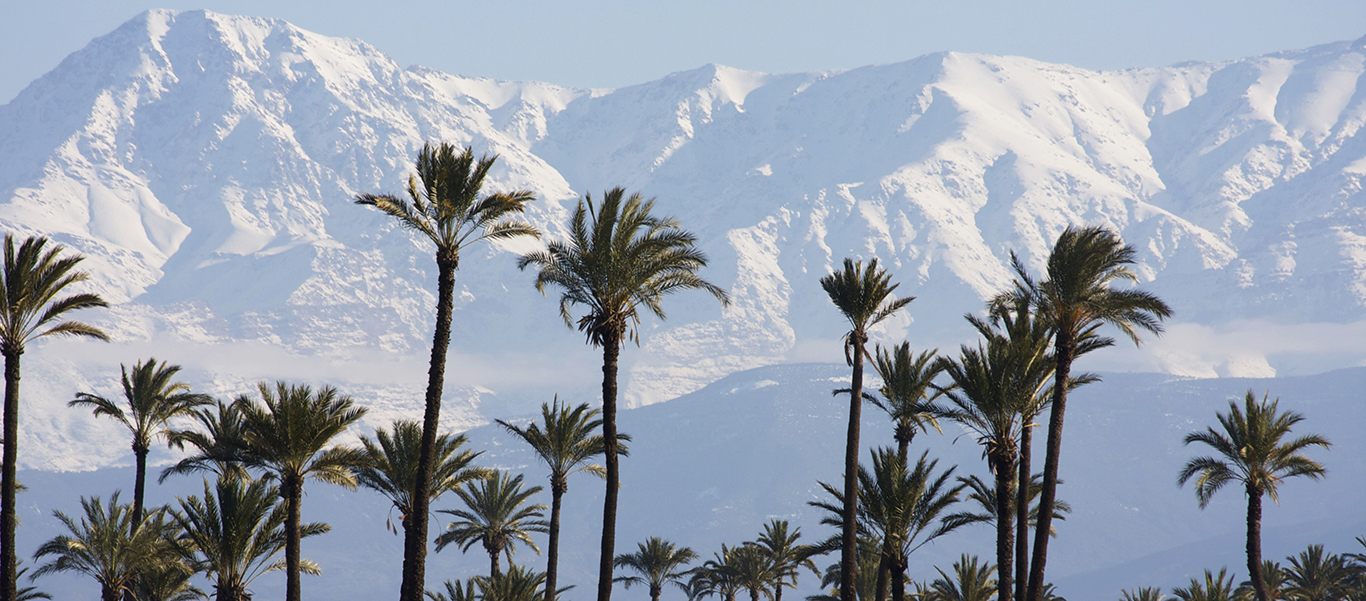Morocco
Morocco Tours
Join world-renowned ornithologist Peter Harrison and photographer Shirley Metz to scour Morocco’s “Kasbah country” for bird specialties and soak up the country’s scenic magnificence and cultural richness as we go. This southern Moroccan adventure begins in the bustling alleyways of Marrakesh, but moves quickly beyond the grip of civilization, to some of the most important ornithological areas in North Africa. The variety of habitats we will cover during this 14-day tour is staggering, from the 8,500-foot alpine peaks of the High Atlas, to the spectacular red dunes of Erg Chebbi at the edge of the Sahara; from the seasonal desert Tamezguidat Lake to the windswept fishing ports of the Atlantic coast. Bird activity is at its height this time of year, with more than 600 resident and migrant species represented. We have the chance to see such rare and near-endemics as the critically endangered Northern Bald Ibis, Levaillant’s Woodpecker, Moussier’s Redstart, and Eleanora’s Falcon; as well as a range of raptors, waterbirds, larks, wheatears and warblers that are difficult to find elsewhere.
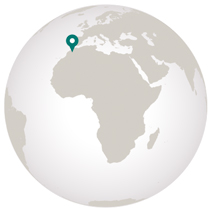
Destinations
- Travel by Air
- Travel by Road
- Travel by Boat
- Travel by Bullet Train
- Travel by Rail
- Travel by Dog Sled
-
Friday, March 25: Marrakesh
Touch down in Marrakesh, Morocco’s legendary “pearl of the South,” and experience the signature giddiness travelers often get driving through its labyrinthine streets. Rest up at your hotel, the elegant Riad Slitine, before a Welcome Dinner with your expedition team.
-
Saturday, March 26: Marrakesh / Ourika Valley / Oukaïmeden / Imlil
This morning, we pack up for a journey to the Toubkal Massif of the High Atlas, due south of Marrakesh. We drive first through the cultivated plains of the Ourika Valley, especially resplendent this time of year, with almond and cherry blossoms, and wildflowers galore. Here, we encounter a good mix of resident and migrant bird species such as Woodchat Shrike; Rufous Bush Robin; Hawfinch; Nightingale; House, Rock and Cirl Buntings. As we climb into the foothills, Tristams, Spectacled, and Subalpine Warblers become commonplace, as well as Black Wheatear and Blue Rock Thrushes. Of special interest will be the endemic Levaillant’s Woodpecker. Ascending ever higher, we make regular stops to ensure a good cross-section of bird species from each habitat. The road ends at the dramatically-landscaped, 8,700-foot Oukaïmeden, Morocco’s premier ski resort. Here, some of the country’s rarest breeding birds can be found, including the Crimson-winged Finch, Alpine Accentor, Alpine Chough, European Dipper and Lammergeier. We head to the village of Imlil for dinner and overnight at the beautiful riverside Riad Dar Imlil.
-
Sunday, March 27: Imlil / Marrakesh / Casablanca / Rabat
After an early breakfast, we head back through Marrakesh, then north into the plains en route to Casablanca. Keep your eyes peeled for Montagu’s Harrier; Crested, Thekla and Calandra Larks on the way. In Casablanca, we visit the Hassan II Mosque, the only mosque in Morocco open to non-Muslims. This imposing building is a stunning example of contemporary religious architecture—its 688-foot minaret is the tallest in the world, and visible for miles. Birds here include Eurasian Shag, Yellow-legged and Lesser Black-backed Gulls. Late afternoon will find us traveling along the Atlantic coast of Morocco, surrounded by Juniper woodland and intermittent marshland. Migration will be at its peak during our visit and sightings could include Squacco and Purple Herons, Greater Flamingos, Great-crested Grebes, various waders, gulls and terns, and even (at dusk) African Marsh Owls. This evening, we head to Rabat for dinner and overnight at Riad Kalaa.
-
Monday, March 28: Rabat - The Zaers / Lac de Sidi Bourhaba
Rise before the sun this morning for a trip into the King’s hunting forest—the Zaers—home to the highest concentration of cork-oak trees in the world. Over 100 bird species breed here, including such rare and sought-after species as the Black-shouldered Kite, Double-spurred Francolin, and Black-headed Bush Shrike. Sightings should also include European Bee-eater, Long-legged Buzzards, Booted and Bonelli’s Eagles, Lesser Kestrels, Hobbies and Lanner Falcons. Small bird enthusiasts will revel in Cetti’s and Olivaceous Warblers, Short-toed Treecreepers, Golden Orioles, and Great-spotted Cuckoos. After lunch, we visit the Atlantic coast area we passed through yesterday, but with more time to visit its lagoons and saltpans including the beautiful freshwater Lac de Sidi Bourhaba, which is known to provide some of the best birdwatching in the country. Look out for the Red-knobbed Coot, Western Marsh and Montagu’s harriers, Marbled Teal, Black-winged Stilts, and possibly even the Fulvous Whistling Duck. We return to Rabat in the evening for dinner and overnight at Riad Kalaa.
-
Tuesday, March 29: Rabat / Mekenes / Ifrane / Midelt
This morning, we drive southeast, stopping on the way to search for the tiny Plain Martin before ascending the Middle Atlas, where we have a chance to spot Levaillant’s Woodpecker and Ruddy Shelduck. Cedar forests blanket the foothills, and in them we may see Wood Lark, Firecrest and the local races of Great Spotted Woodpecker, Coal Tit and Atlas Flycatcher. We’ll stop for the night in tiny Midelt, which offers some breathtaking views of the eastern High Atlas as they rise seemingly out of thin air. Dinner and overnight at Hotel Taddart, just outside of Midelt.
-
Wednesday, March 30: Midelt / Zeida Plain / Rissani / Merzouga
We head out early toward the Zeida Plains, known as the place in Morocco to find Dupont’s Lark. This species is notoriously elusive, and is infamous for disappearing amongst the tussocks. During our walk we may see Thekla and Lesser Short-toed Larks, Red-rumped and Desert Wheatears, and Black-bellied Sandgrouse. Afterwards we head south to the edge of the Sahara. En route, we may see Eurasian Crag-martin, Desert Lark and Black Wheatear while, in a spectacular gorge, Rock Bunting and Blue Rock Thrush can be found. Arrive in the evening in Merzouga, the gateway to the ethereal Erg Chebbi sand dunes, where we stay for the next two nights. Dinner and overnight at Kanz Erremal, at the edge of the dunes.
-
Thursday, March 31: Merzouga - Rissani / Erg Chebbi Dunes
We dedicate all of today to exploring Erg Chebbi, the largest dune system in Morocco. Spanning 17 miles from north to south and reaching heights of 525 feet, Erg Chebbi may not be the largest sand sea in Africa, but it is extraordinarily scenic. The dunes rise dramatically above the flat, black hammada and glow stunning shades of orange, pink and purple in the afternoon sun. Brown-necked Raven, Hoopoe Lark, Desert Sparrow, African Desert Warbler, Desert and Bar-tailed Desert Lark, Fulvous Babbler, Crowned and Spotted Sandgrouse, Barbary and Lanner Falcon and different migrant passerines all reside here. In addition, if rains have been plentiful, the seasonal lake of Tamezguidat, or Lac de Merzouga, at the southern end of Erg Chebbi, is one of the best areas in Morocco for spotting desert birds, including Desert Warblers, Fulvous Babblers, Blue-cheeked Bee-eaters, and possibly even Egyptian Nightjars. Sometimes, in good years, the lake even attracts flocks of flamingos. Dinner and overnight at Kanz Erremal.
-
Friday, April 1: Merzouga / Tagdilt Track / Boumalne Dades
This morning, we head west, where, about an hour outside of Ouarzazate, lies a rocky stretch of road called Tagdilt Track, likely our best bet to tick off as many desert birds as possible in one go. We will stop en route to search for Scrub and Spectacled Warbler and Trumpeter Finch. The desert through which Tagdilt Track runs is at quite a high altitude, and larks are well represented, including Desert, Lesser Short-toed, Thick-billed and Temminck’s Larks and Greater Hoopoe-Lark. Desert and Red-rumped Wheatears also occur. With luck, we may see sandgrouse—most likely Black-bellied, but sometimes Crowned Sandgrouse are also spotted. Cream-colored Coursers may also be present. We head to Boumalne Dades at the very spine of the Atlas range for dinner and overnight at the exquisite Hotel Xaluca Dades, with panoramic views of the Dades Valley.
-
Saturday, April 2: Boumalne Dades / Tagdilt Track / Skoura
We begin the day with another visit to the Tagdilt Track to look for any species we may have missed yesterday, then head west to search the stone-desert roadsides for the Maghreb Wheatear. A visit to the huge El Mansour Eddahbi Dam on the Oued Dráa, Morocco’s longest river, promises some good finds—Spoonbills, Greater Flamingos, Black-winged Stilts and Avocets are all residents here. Migrants include raptors such as Short-toed and Booted eagles, Osprey, Western Marsh Harrier, Barbary and Lanner Falcons. For small-bird enthusiasts there are Desert and Thick-billed Larks, White-crowned Black Wheatears, Trumpeter Finches, and Bar-tailed, Desert and Hoopoe Larks. After a search along the dam, we will head to the once-powerful, mudbrick castle-dotted city of Skoura, where we have dinner and overnight at Kasbah Ait Ben Damiette.
-
Sunday, April 3: Skoura / Taroudant / Agadir
We begin our day in the dry desert and end on the Atlantic coast at Agadir. Our route west takes us over the Anti Atlas into the Souss Valley. This area of fruit orchards and frizzy argana forests is one of the most famous ornithological regions of the country. Species here include Stone Curlew, Little Owl, and Red-necked Nightjar. Tree-climbing goats are a common sight in the argana woodlands here, as are Rufous Bush Robins, Olivaceous and Sardinian warblers. Egyptian and Griffon vultures are also sometimes seen, as well as Pallid and Little Swifts. We arrive in the busy port city of Agadir, our home for the next two nights. Dinner and overnight at Riad Imourane.
-
Monday, April 4: Agadir - Oued Massa / Oued Souss
We have an early start this morning to visit Oued Massa, another of Morocco’s famous bird areas. It is the most northerly Saharan wadi in Morocco. Towering sand dunes run along the southern edge to form a coastal lagoon that is linked to the ocean only at the highest tides. The area has been a biological reserve since 1980. Target birds include the secretive Black-crowned Bush Shrike, Marbled Duck, Moussier’s Redstart, Little Owl, Ruddy Shelduck, Purple Heron, Laughing Dove, Little Bittern, and Brown-throated Martin. Later, we visit the Oued Souss—an excellent area for flamingos, Stone Curlew, shorebirds and large numbers of roosting gulls and terns. Dinner and overnight Riad Imourane.
-
Tuesday, April 5: Agadir / Cap Rhir / Tamri Estuary / Oued Ksob / Essaouira
We head north this morning on a coastal route to Essaouira, stopping first at Arghoud Beach to see Lesser Black-backed Gulls of two races—Audouin’s and a few Yellow-legged Gulls. We have also often seen a skua or two offshore here. At Cap Rhir, we will have a chance to spot more skuas, and shearwaters. Further north, Tamri Estuary is a breeding area for half the remaining African population of Northern Bald Ibis (there are now only about 500 in the wild). Unlike other members of the ibis family, the Northern Bald Ibis is non-wading and prefers semi-arid conditions to wetlands. We will scour the scrub and fields near the estuary for a glimpse of them. Further north, the Ksob Wadi and nearby Mogador Island, with its crumbling old prison, are now an ornithological preserve sheltering the rare Eleonora’s Falcon. A walk along the riverbed this time of year will often furnish views of the graceful birds as they hunt overhead. Others to look for here are Barbary Partridge, Rufous Bush Robin, Moussier’s Redstart and Olivaceous and Sardinian Warblers. This afternoon, we arrive in intoxicating Essaouira, with its mix of Breton-like seaside quaintness and decidedly Moroccan palm-lined alleyways. Dinner and overnight at Dar L’Oussia, situated on the ramparts of the old medina.
-
Wednesday, April 6: Essaouira / Marrakesh
We return to Oued Ksob early this morning to view flocks of roosting gulls, terns and other migrating water birds including egrets, spoonbills, and herons. Then, we bid farewell to the Atlantic coast and turn inland for the drive back to Marrakesh. We arrive in time for a visit to the old quarter of Marrakesh and the impressive Jemaa el-Fna Square, an unbelievable experience for any visitor, replete with snake charmers, water sellers and spice stalls, plus the charm of bargaining in the souk. Farewell dinner and overnight at Riad Slitine.
-
Thursday, April 7: Depart Marrakesh
After breakfast, transfer to the airport for international flights home.

